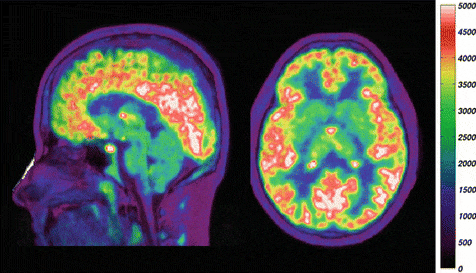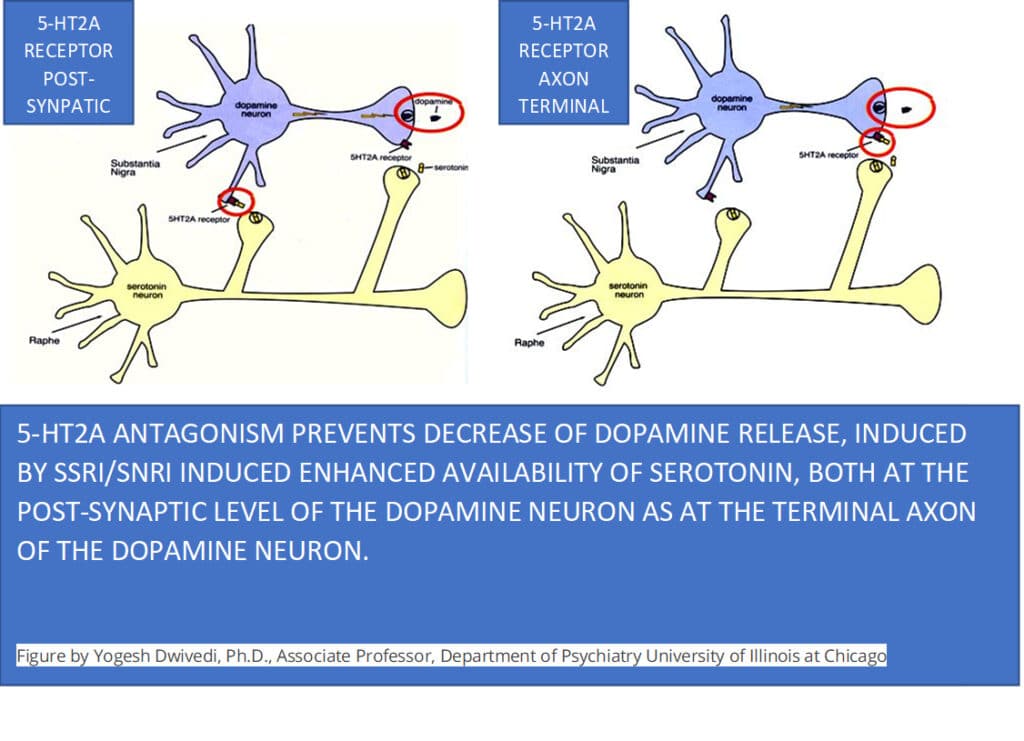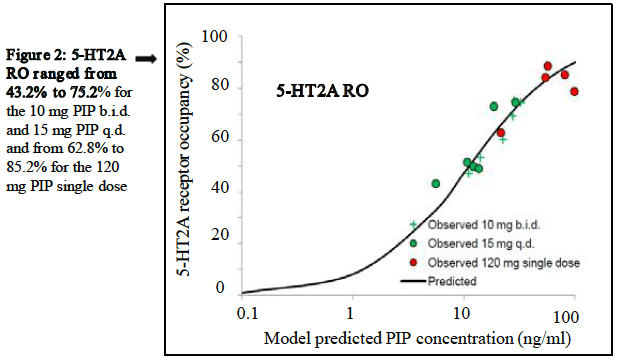ANT01:
Highly selective serotonin-2A and dopamine-4 blocker
ANT01 compromises an extremely low dose of the established compound pipamperone (15mg), which is currently not registered in the U.S..
Pipamperone has been registered and marketed as Dipiperon® for more than 40 years in 8 European countries and 16 other countries world-wide by Janssen Pharmaceutica, a division of Johnson & Johnson (JNJ). This at recommended dose range of 120 up to 360 mg daily, divided in 3 doses. Post-marketing pharmacovigilance reports assessing patient’s exposure to pipamperone covering over 20 million patient-months are available.
ANT01 shows a unique combined high BLOCKING affinity toward the human serotonin 2A and dopamine 4 receptor.

Imaging of the serotonergic 5-HT2A receptor system in the Human Brain, target of ANT01, and which is involved in brain disorders such as depression and Alzheimer’s Disease.
Ref: “PET Imaging of the 5-HT2A Receptor System: A Tool to Study the Receptor’s In Vivo Brain Function, Matthias M. Herth, Part of the The Receptors book series (REC, volume 32)”
The prevention of a negative feedback mechanism operating at the serotonin autoreceptor level enhances the neurochemical and clinical effects of antidepressants such as SSRIs and SNRIs. As such the blockade of 5-HT2A receptors can improve the clinical effects of SSRIs.
More specifically, the blockade of 5-HT2A receptors can improve the clinical effects of SSRIs and SNRIs by inhibiting the decrease of dopamine release induced by enhanced availability of serotonin due to SSRIs/SNRIS’s both at the post-synaptic level of the dopamine neuron as at the axon terminal as depicted by the figure below.

As such, a 5-HT2A antagonist in conjunction with a SSRI/SNRI will cause more release of dopamine which has been associated with improving emotional blunting and cognitive functioning which both are very often key symptoms of Partial Responsive Depression (PRD).
Moreover, the dopamine D4 receptors plays important roles in cognition and regulating these in depressed patients can improve their cognitive performance substantially while current antidepressants do not.
To demonstrate the specific 5-HT2A binding of low doses pipamperone PET study was performed in human brain using a selective 5-HT2A PET tracer as shown in the figures below.

Relationship between 5-HT2A Receptor Occupancy and plasma concentration of pipamperone
(Ref.: E.Buntinx et all, Low dose pipamperone, enhancing antidepressant effect of citalopram, occupies 5HT2A 50–60% leaving D2 nearly drug free, European Neuropsychopharmacology, Volume 20, Supplement 3, August 2010, Pages S396-S397)

